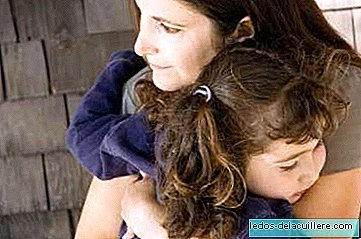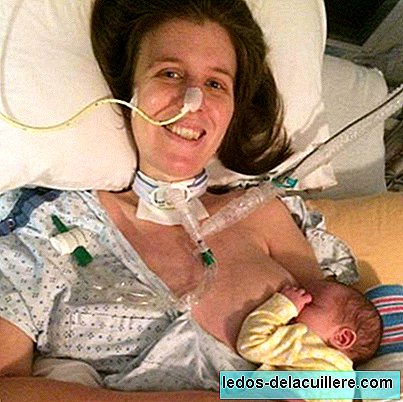A few days ago we gave you a warning for all mothers and all fathers: it is necessary to avoid that pediatricians try to solve the phimosis of children in the office, lowering their skin abruptly, because the remedy is worse than the disease, which In that case it is not even something to solve because the normal thing is that the skin of the foreskin cannot go down until the child is several years old.
Well, if we talk about girls, there is a similar condition, the synechia of the labia minora (The labia minora stick together), which happens to some girls when they are small and that is often solved in the consultation. If they are small they do not usually complain too much, but if they are older they suffer and cry and some try to avoid in later visits that nobody looks at him or touches his vulva. So here the question is: should we solve the synechia as soon as they are seen? Is it better for the surgeon to solve it? Can you choose to do nothing?
What is a vulvar synechia?
The first thing, so that you know what I am talking about, is to explain what is a vulvar synechia or minor lips synechia. It is a fusion of the labia minora or a part of them. It is considered as one of the most frequent gynecological problems in girls before puberty and it is estimated that about 3.3% of girls between 13 and 23 months suffer from it.
Unlike the physiological phimosis of children, who are born with it, the synechia happens later: it is not a congenital malformation or a normal event at birth. It happens later and the causes are diverse and not entirely clear. On the one hand, the low production of female hormones (estrogens) promote it. On the other hand, diaper dermatitis, if there is irritation, and the use of wipes also help. It is not that the synechia are produced by using wipes, but the fact of using them instead of soap and water means that the secretions and the remains do not just leave the area (the clean wipe, but also drag and sometimes not enough ), acting as "glue".
How to treat them?
And here comes the issue, which will depend on the symptoms, as happens with phimosis. If a child has no problems with having the skin of the glans attached to it, it is better to do nothing. If it causes infections or problems urinating, then you have to find a solution.
The same thing happens in girls. Most often, girls have no symptoms. In fact, most parents realize that their daughters have adhesions because the pediatrician or the nurse sees them. However, some may suffer vaginal irritations, vaginal infections or recurrent urinary infections. In more severe (and at the same time more rare) cases, symptoms such as incontinence or urinary retention may occur.

Well, the treatment will depend on this. In principle, if there are no symptoms, if the synechia appears without warning signs and is discovered by chance it can be expected because they usually resolve alone after adrenarche (when girls begin to have more female hormones by age 6-8) and until puberty. This is the recommendation of a study published in April this year in the journal Journal of Pediatric and Adolescent Gynecology, which adds that in this case parents should take into account the importance of maintaining proper hygiene.
A second option is that of separate the labia minora manually. This is what is usually done in the pediatrician's office, after applying anesthetic cream (or not). Either by maneuvering with your hands (slowly stretching each side), either with the tip of a thermometer or with another tool that has a blunt tip, you can separate the labia minora and resolve the synechia. The problem is that sometimes, as I say, girls have a bad time, and that is solved once is no guarantee that it will not happen again.
There are more, more conservative, options that go through the application of an estrogen or corticosteroid cream. In the case of estrogen, it is a treatment that works but seems to have less effect when girls are already 36 months old and when adhesions are dense or fibrous. As side effects, the local application of hormones can cause an increase in breast development and increased pigmentation of the vulva, although they are not symptoms that occur frequently and also disappear when the treatment is withdrawn. The problem in this case is that when the cream stops applying the adhesions can reappear, making new treatment cycles necessary or using more aggressive treatments such as manual separation or surgical separation.
Refering to corticosteroid ointment, as used with children to solve phimosis, a study published in 2014 compared estrogen treatment with a mixture of cortisone and petroleum jelly, and it was found that with estrogen cream 80% of the synechiae were resolved in girls treated in this way, while 89.4% were resolved with the mixture of choroids and petrolatum. Another study, on the other hand, found no difference in treating synechiae with estrogens, with a mixture of estrogens and corticosteroids or with a corticosteroid cream alone. It follows that corticosteroid cream is a totally valid alternative, without the side effects of estrogen cream, which can be used if you want to try to solve a painless synechia.
The last option is surgical separation. It is performed under anesthesia and is the method of choice if it does not separate on its own during puberty or if the synechia causes symptoms (infections, discomfort when urinating) and the cream has not worked. There is a risk that the lips will come back together and that is why hygiene and the use of petroleum jelly in the area after bathing is important.
Therefore, because of the risk of closing again in all cases of separation, the ideal and most advisable seems to be doing nothing unless there are symptoms.












